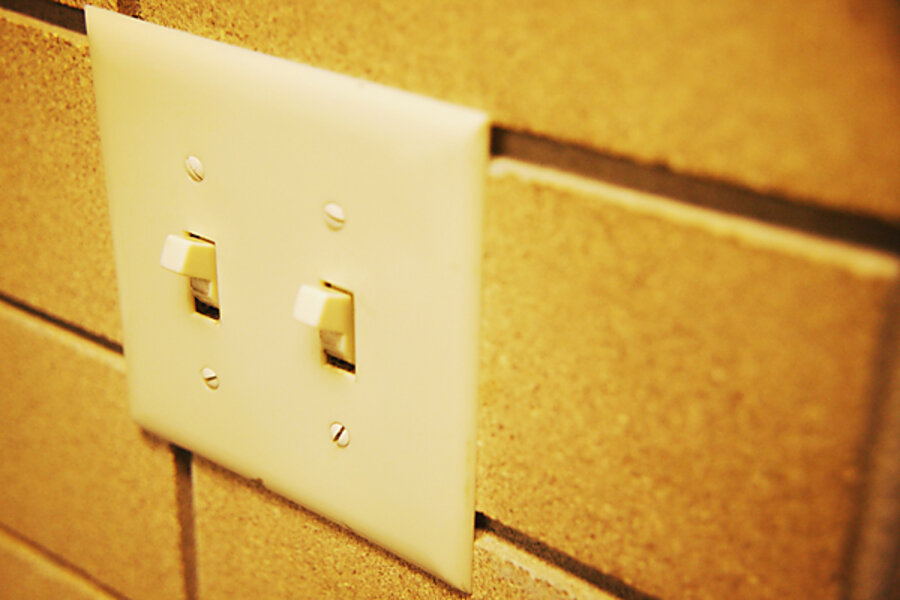Do motion-activated light switches save money?
Loading...
Paul writes in:
I’ve really been enjoying your recent cost breakdown posts. I’m thinking about installing a few motion-activated light switches in my home and I’m wondering if they will actually save me money. Which switches do you like? Will it actually save money in the long run?
Paul is referring to a motion-sensing light switch that will turn the lights on in a room when it detects any motion and will automatically turn the lights off after a certain period of time if there is no motion detected.
First of all, motion sensing switches do have some “phantom” energy use. According to this study, motion sensor switches use about a watt of energy on standby mode (23 hours a day) and 5 watts on active mode (about an hour a day). This trims a bit off of your overall savings. Over the course of a month, assuming your electricity costs the nationwide average of $0.11 per kilowatt hour, the switch itself will devour 0.84 kilowatt hours, or about $0.09 of energy. Month in, month out.
The model I’ve been recommended a few times is the Zenith SL-6107-WH, which sells for $22.90 at Amazon.com. You would want to prorate this over the lifetime of the switch – say, fifteen years. You’d effectively add a cost of another $0.13 a month for the switch. The switch thus has a cost of about $0.22 a month over the lifetime of the switch beyond what you currently have installed.
So, will you make that $0.22 a month back – and more? That cost is equivalent to the energy cost of leaving a single 60 watt light bulb on for 33 hours.
I wouldn’t install one in a heavy-traffic room, particularly one that has only one or two main lights (like our kitchen). In such a room, the switch would rarely flip off when there are people active in the house, because you would normally have it set to only turn off the lights after a lengthy period of no motion (say, 20 minutes or half an hour). The little bit you might save in having it flip off for ten minutes here and ten minutes there would not be a net savings over a month.
Where I would consider one is in a medium-traffic or low-traffic room, one in which you might accidentally leave the lights on for long periods without noticing. Closets. Guest rooms. Storage rooms. Utility closets. Bathrooms. This is particularly true if there are multiple lights on that switch.
In these rooms, traffic is very irregular and there can easily be periods of time where days go by without the lights being turned off. For example, the light fixture in our guest bedroom has four lights in it. If these all contained sixty watt bulbs and we left it on for a day, the energy use alone would have made the automatic light switch worth it in this case.
The room that I think would be the most effective for such a switch would be the bathroom. I can speak from experience that restroom lights are often left on, particularly in the evening hours. While these are usually “caught” before I go to bed, there’s often an hour or two of several bulbs burning, eating up the energy.
But there’s another factor at work here.
If you want to save money on energy costs in such low-traffic places, energy-efficient lighting is probably the smarter choice. Instead of investing $25 in a motion-sensing light switch to cut down on energy costs, install CFL or LED bulbs in such low-traffic rooms. Not only will the energy costs be lower while the room is actually in use, the penalty won’t be nearly as severe if you forget to turn off the light switch. For example, one CFL that produces light equivalent to a 60 watt bulb uses only 13 watts; an LED bulb (while more expensive up front) uses only 5 watts. This drastically cuts into the savings you would get from a motion-sensing switch, to the point that I wouldn’t find it worthwhile to ever install one to manage a single bulb.
In my own home, I would consider installing such switches is in the bathrooms and possibly in the utility room, the garage, and the guest bedroom – in other words, rooms with multiple lights on one switch that are used only in brief bursts with long periods of inactivity. Aside from that, I’m not convinced that such a switch would be a net savings.
Add/view comments on this post.
------------------------------
The Christian Science Monitor has assembled a diverse group of the best economy-related bloggers out there. Our guest bloggers are not employed or directed by the Monitor and the views expressed are the bloggers' own, as is responsibility for the content of their blogs. To contact us about a blogger, click here. To add or view a comment on a guest blog, please go to the blogger's own site by clicking on the link above.


